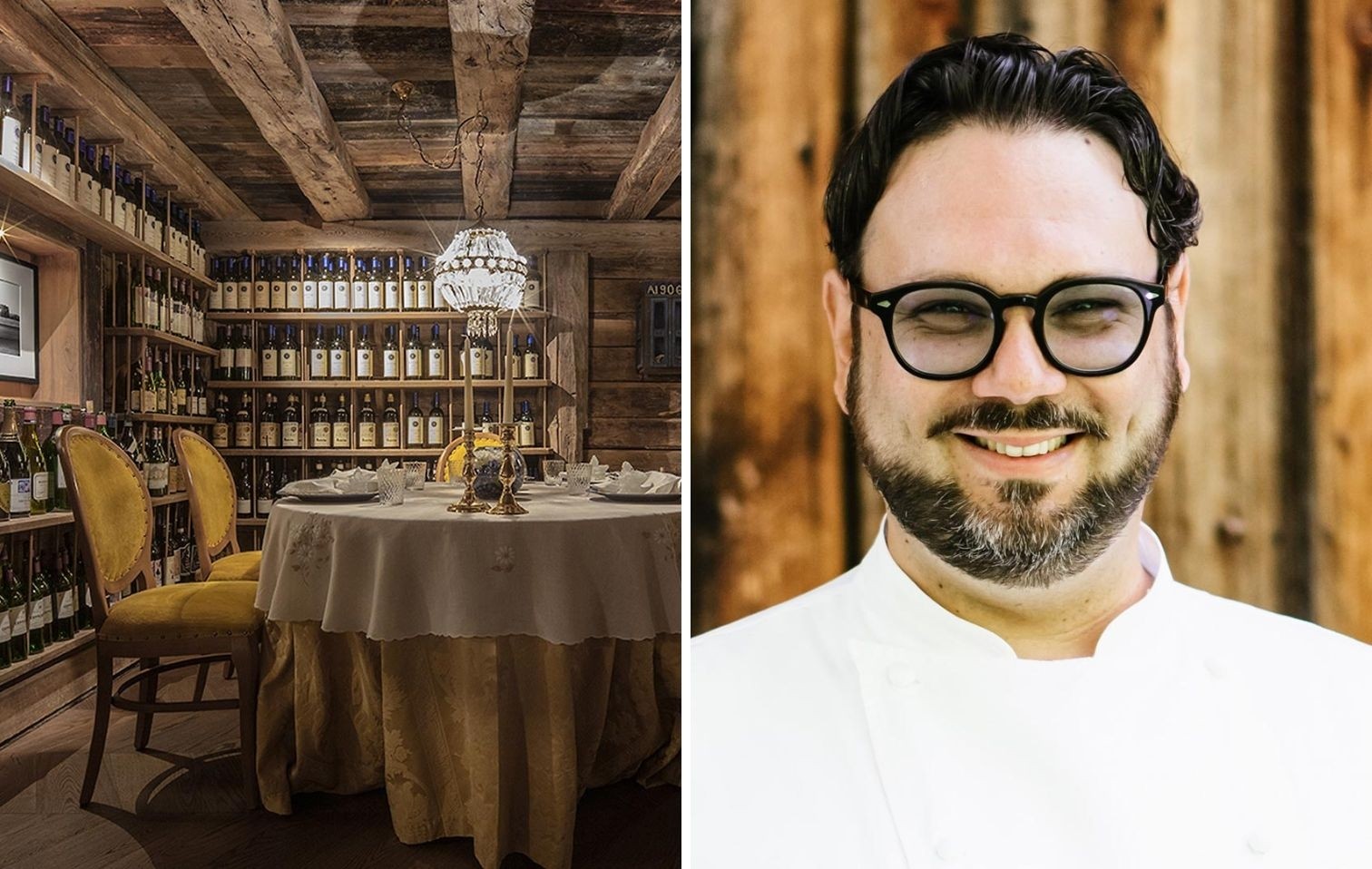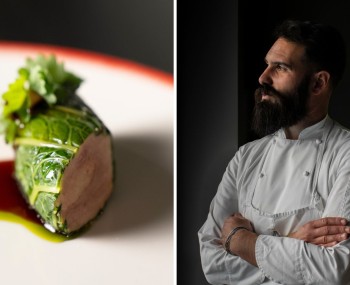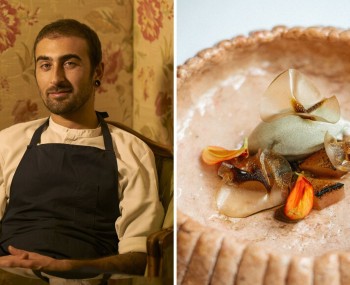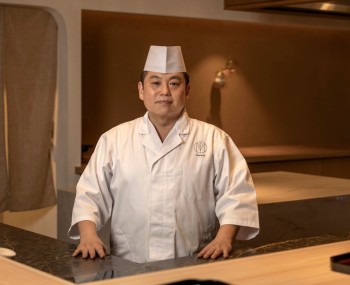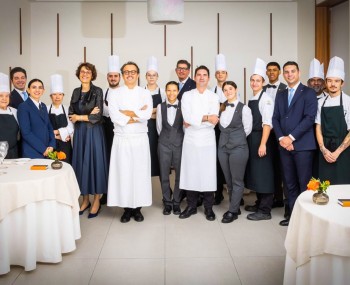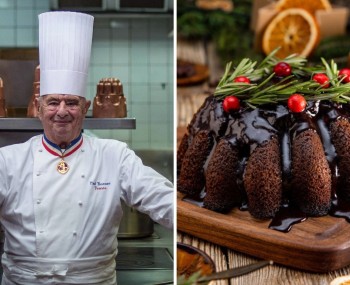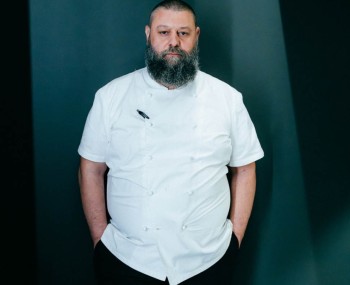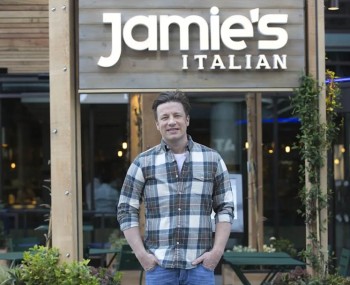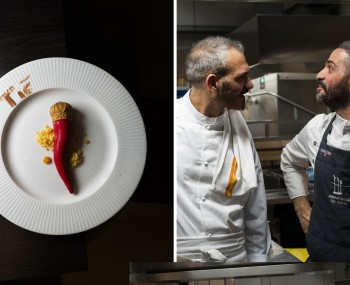The Costa family is about to reopen its doors: the award-winning Hotel La Perla in Val Badia is preparing to welcome guests and announces a preview of what's new for the upcoming winter season. Our interview with Michelin-starred chef Simone Cantafio on the Incö format and all the unmissable events at Stüa de Michil, with a mantra in the background: “Haute cuisine is born from the power of human interaction.”
The territory
The outline is that of the most famous chain in the Alps, the Dolomites, a stone giant dominating 14,2000 hectares of mountain landscape between the Veneto and Trentino-Alto Adige regions: here, among towering peaks, impassable walls, and deep valleys, lies a small melting pot of accommodations worthy of being told.
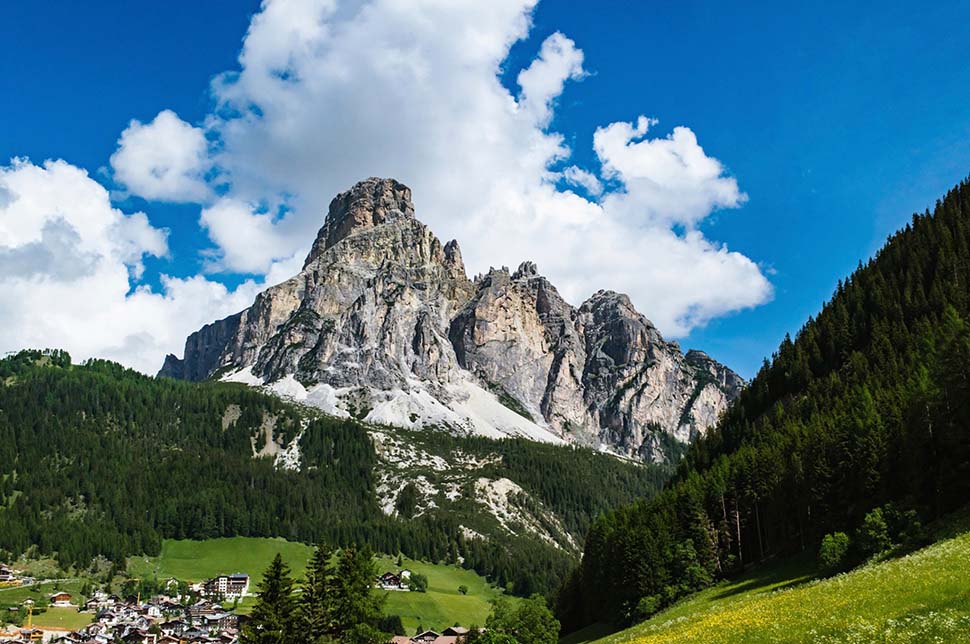
This is the case of Hotel La Perla, an intimate and cozy “ciasa” where you can stay in Val Badia, more precisely in Corvara. The latter rises at the foot of Mount Sassongher, which dominates the sunrise as soon as the first lights begin to pulse and break on the sharp, sometimes bare, sometimes snow-capped peaks.
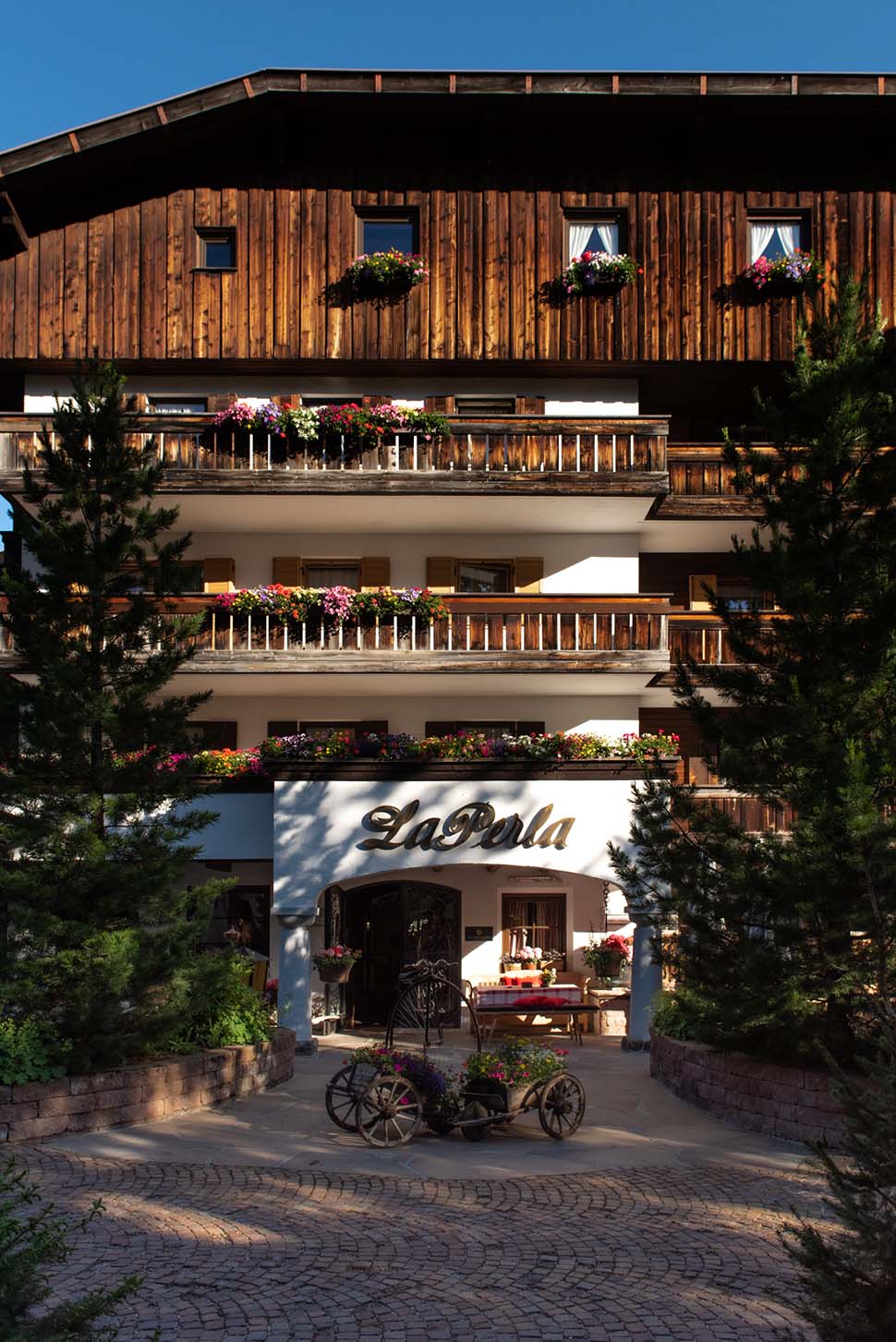
From the terrace located on the second floor, one can enjoy a unique view, resting in the cradle of Ladin history: just put your ear to the ground to hear the sense of peace emanating from the rock, more alive than ever. Every farmhouse in the area seems to contribute to the narrative: colorful geraniums placed on windowsills greet visitors, sloping roofs offer shelter from bad weather, and woodwork expertly inlaid by artisans absorbs emotion.
The hotel
The Costa's grand “mountain house”-included in the Leading Hotels of the World circuit and recently awarded for its sustainable approach - is a tribute to the typicalness conscious of its evolution, a place where the art of hospitality blends with respect for the community.


Fifty-one are the rooms where patrons can stay overnight from early June to late September, and from December to March, each designed and furnished with the taste of Anni, the matriarch, in mind. The furniture, locks and latches, antiques, and various collections on display (hats, walking sticks, teapots, cutting boards, lids) are inspired by Tyrolean folklore, characterized by warm colors: red, green and brown, harmonious and relaxing. Wool, linen and cotton were used to cover upholstery, often decorated with floral patterns.
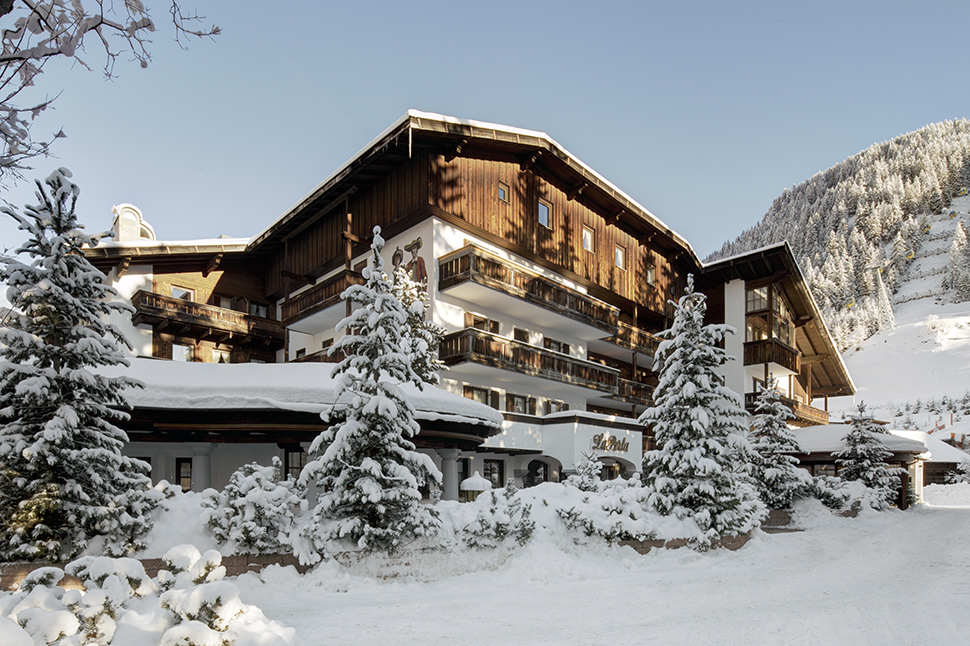
Six, on the other hand, are the stuben (tiled stoves) dating back to the 1700s, adapted by the progenitor Ernesto and arranged in the dinettes. And to think that it was he who set the machine in motion in 1956, asking the municipality for permission to rent part of his private home. Yet nothing has been disrupted since then: Michil, Mathias and Maximilian (the heirs of the new generation) have simply expanded and enriched the offerings, maximizing the comfort and pleasures associated with the overall experience.
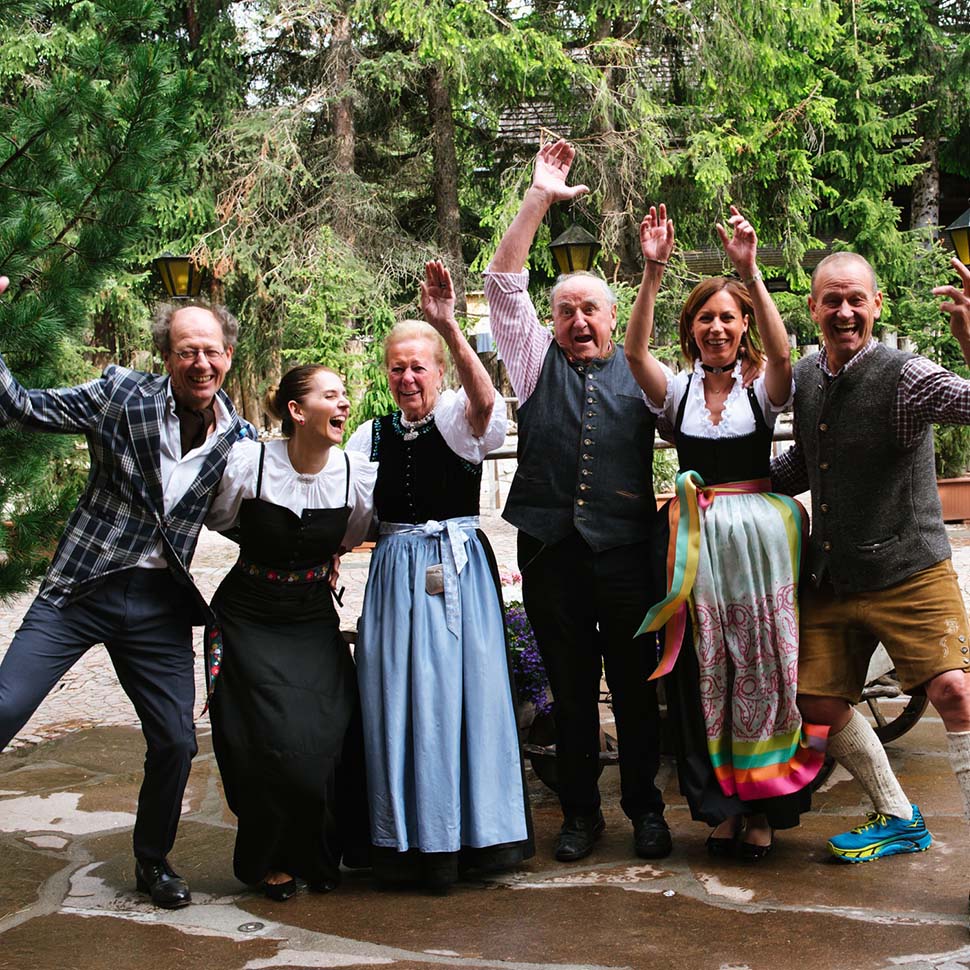
The hospitable atmosphere reflects the innate qualities of a family dedicated to work no less than to human relationships: every detail is designed to put the latest arrivals at ease, in the common areas for example, and each staff member becomes in just a few days a fellow traveler who will remain etched in memories. The most immediate example of this is director Nicolò Bagna, capable of great empathy, who greets adults and children by name among the halls with a smile always at hand.

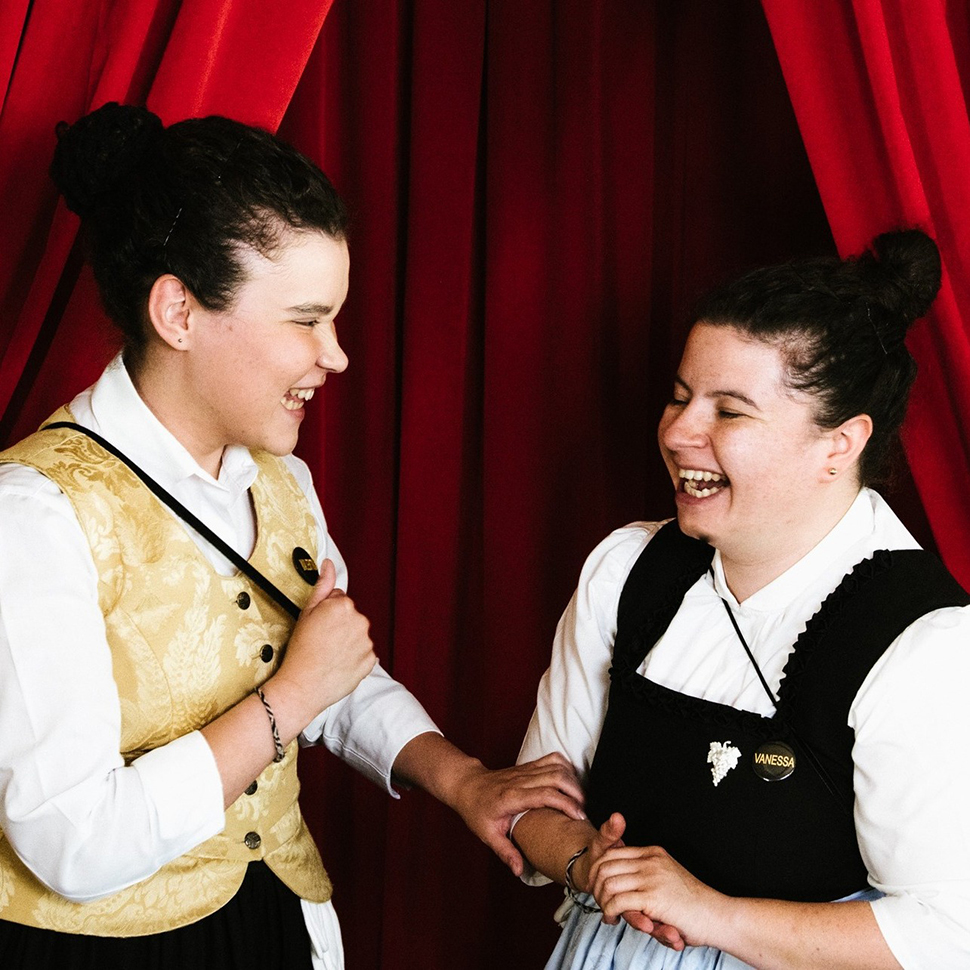
Outside, the trees stand majestically, giving pure oxygen: the foliage sways in rhythm, spreading a rare calmness in the air, and inviting anyone to pause before the life that flows, slow and gentle, among the sturdy leaves. Contact with nature in corners like this is inevitable, and the heart rediscovers an ancient beat, far from the hustle and bustle, the cemented streets and buildings of urban centers.
Philosophy
Before we begin our tour, a little background is necessary. In 2011 pioneering companies draw up for the first time the Common Good Balance Sheet, a model of alternative economy: thus abandoning competition in favor of cooperation. This assessment measures a company's social responsibility, ecological sustainability, democratic co-management and solidarity. The better the outcome, the greater the benefits. Thus the Pearl “manifesto” takes on a definite value. The basic principles?
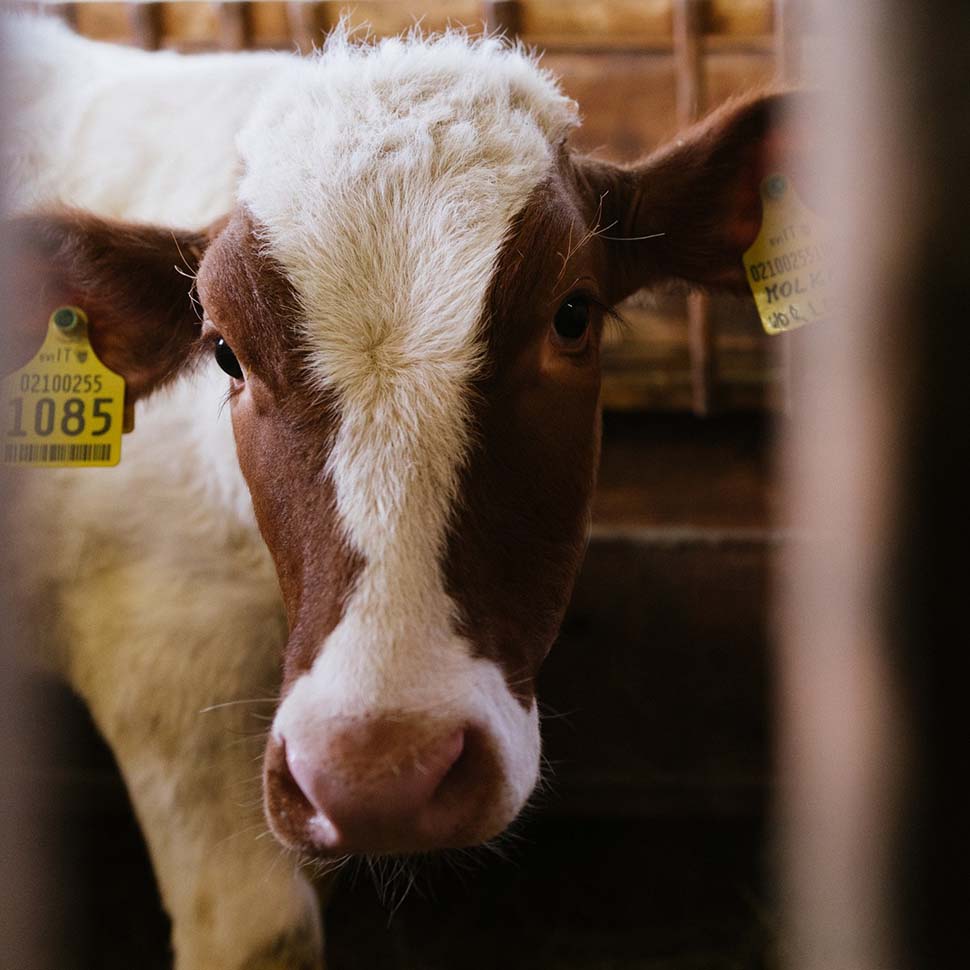
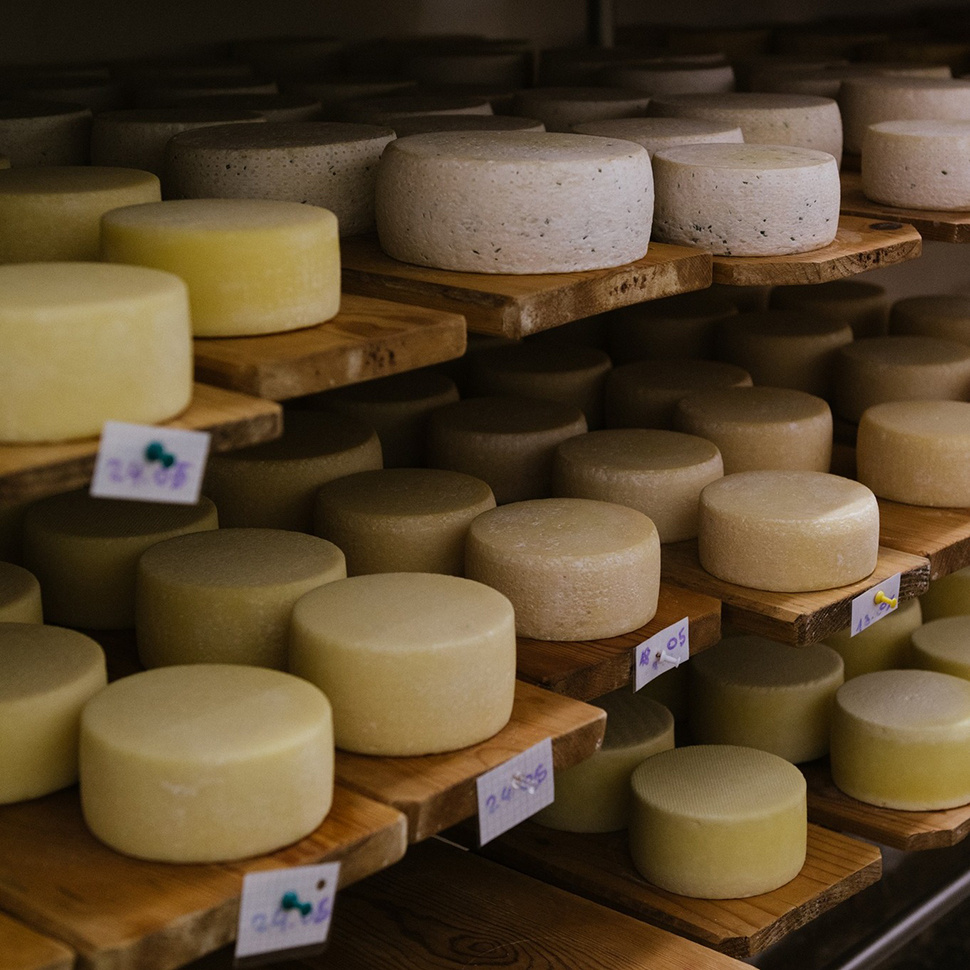
"We put organic first, avoid products from overseas unless they are derived from fair trade, coffee, chocolate, and bananas. Apple strudel is unobtainable in the summer, because storing apples in cold storage wastes energy unnecessarily, as does the private mini fridge. Another point we are beating on is the excessive consumption of meat, which harms us and the animals."
The spa
Recently renovated and expanded, Salus per Aquam is an almost fairy-tale Eden, in which to regenerate mind and body after skiing on the slopes, hiking or biking among the trails. As soon as you cross the threshold you are greeted by soft light, delicate fragrances and soothing sounds. The treatments are disparate: Anna, Silvia, Verdiana and Debora will advise you according to your needs.

You can start with a massage, performed by expert hands that can release any accumulated tension, with essential oils that nourish the skin and awaken the senses; while the sauna and steam room promote detoxification and stress release. You can even opt for classic rituals such as footbaths, exfoliating scrubs and revitalizing masks, a pampering treat to take care of yourself.

In addition, in the shared areas you can sip herbal teas, enjoy some fruit, or swim in the heated water of the pool. Finally, you cannot miss a short siesta on the loungers used for resting.
Restaurants
In the whole of this fascinating reality as many as five are the restaurants where you can refresh yourself ! Les Stües (half board), intimate and picturesque, catapults us inside an old Ladin postcard; it looks like a museum, everything is quaint, the checkered tablecloths, the ornamental bouquets, the typical carved seats.

If you feel like spending an evening of music and good local food, but in a “new style” key, this is instead the bistro for you. Around the bar in the large hall supported by irregular stoneware slabs, thirteen stations suitable for larger groups immediately spring to mind.
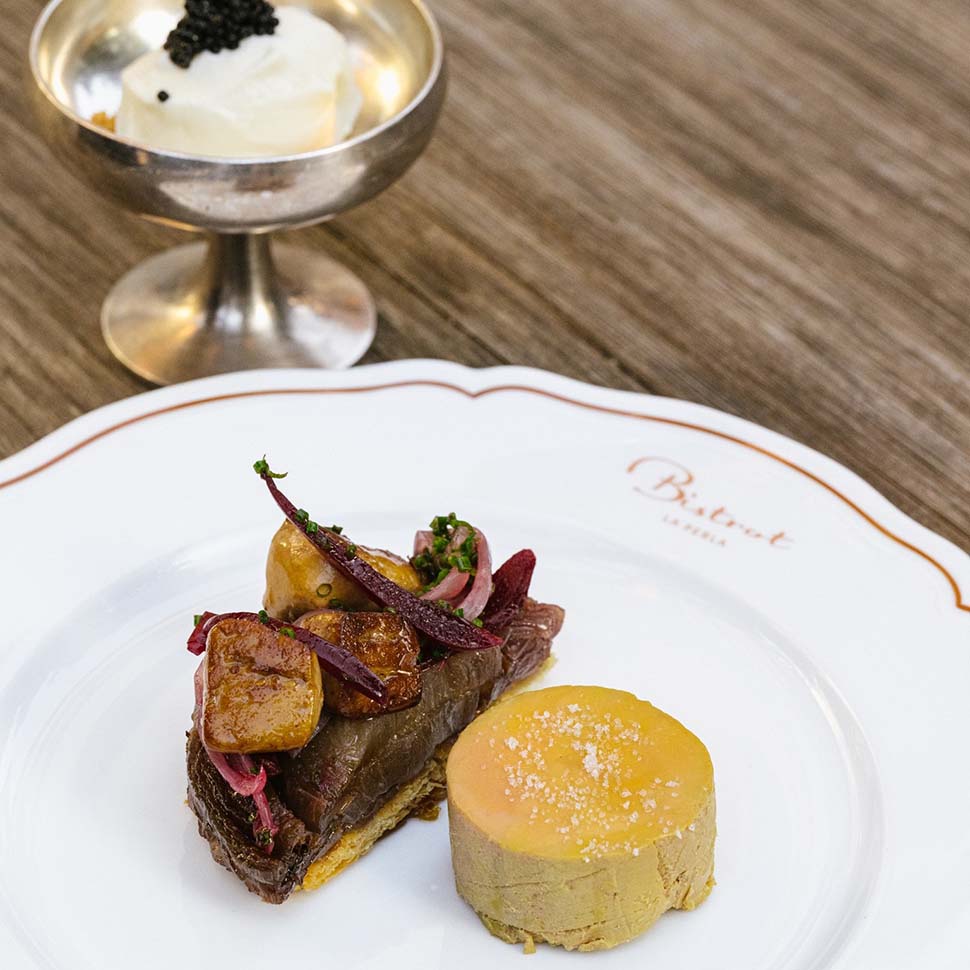
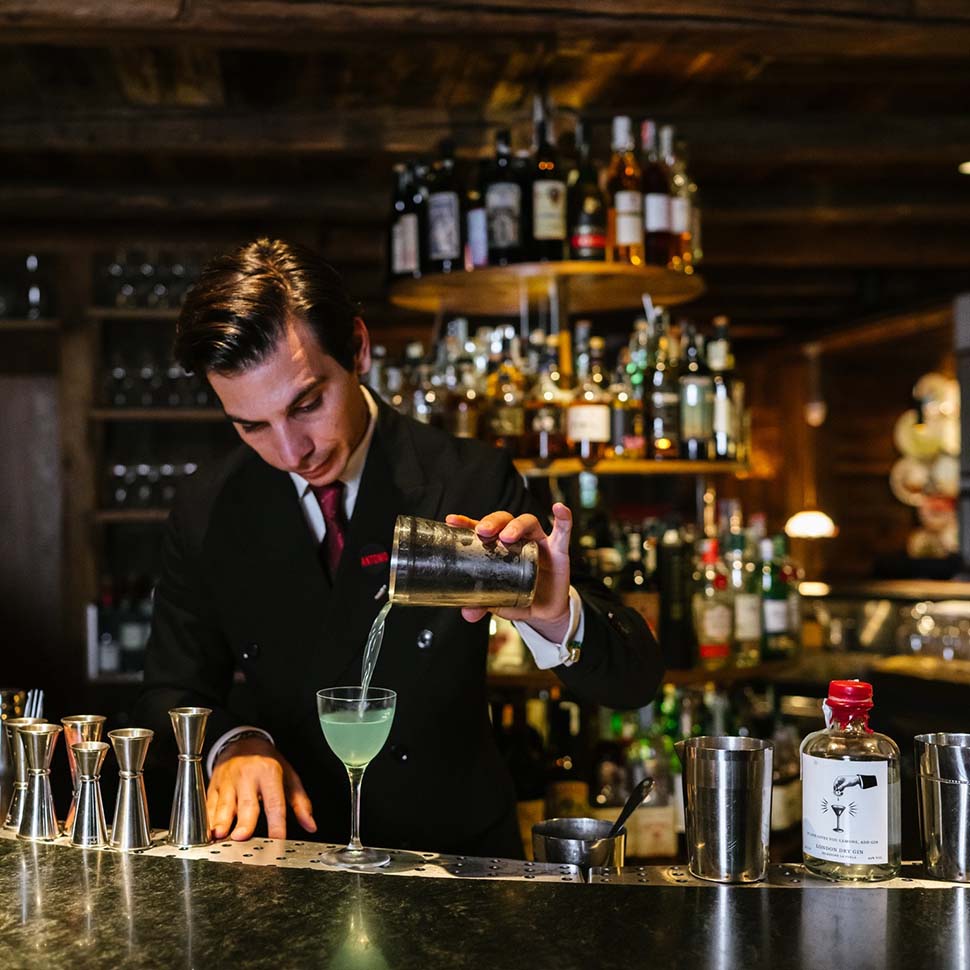
Thanks to the skill and savoir faire of bar manager Antonio Virili, the menu ranges from whimsical cocktails and non-alcoholic drinks to tailored drinks made express to go with finger food or invigorating hot dishes.
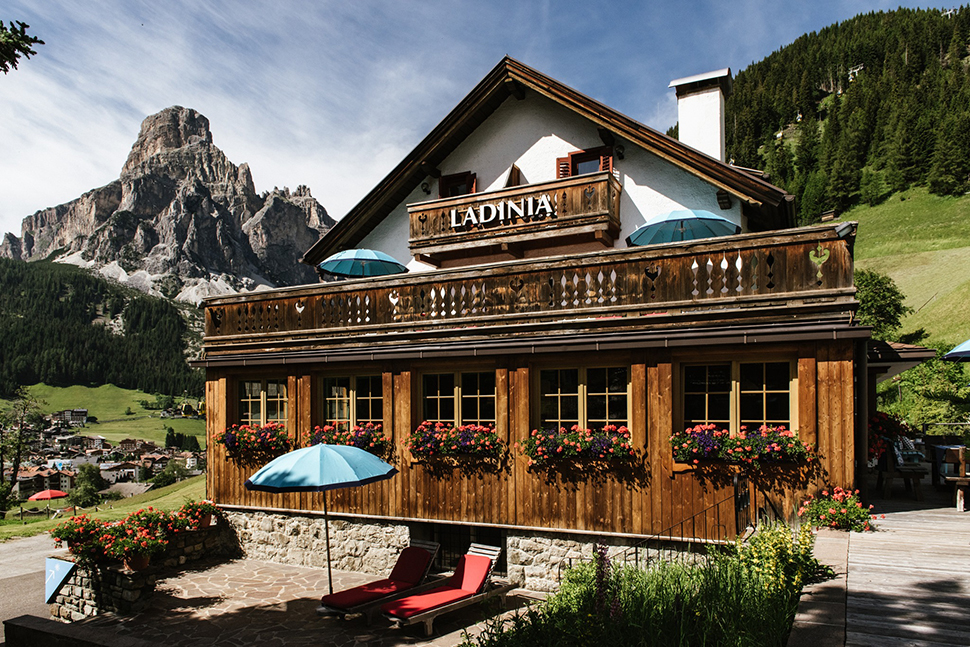
The inn in the old village, now Berghotel, is also part of the group. The Ladinia is nothing if not a gluttonous refuge, with a well-framed menu full of short-chain, mainly South Tyrolean , Alpine goodies. The selection of speck is remarkable, not to mention the cheeses “from the cheesemaker friends.” Fall offerings recall the underbrush, fresh mushrooms, pumpkin and chestnuts.

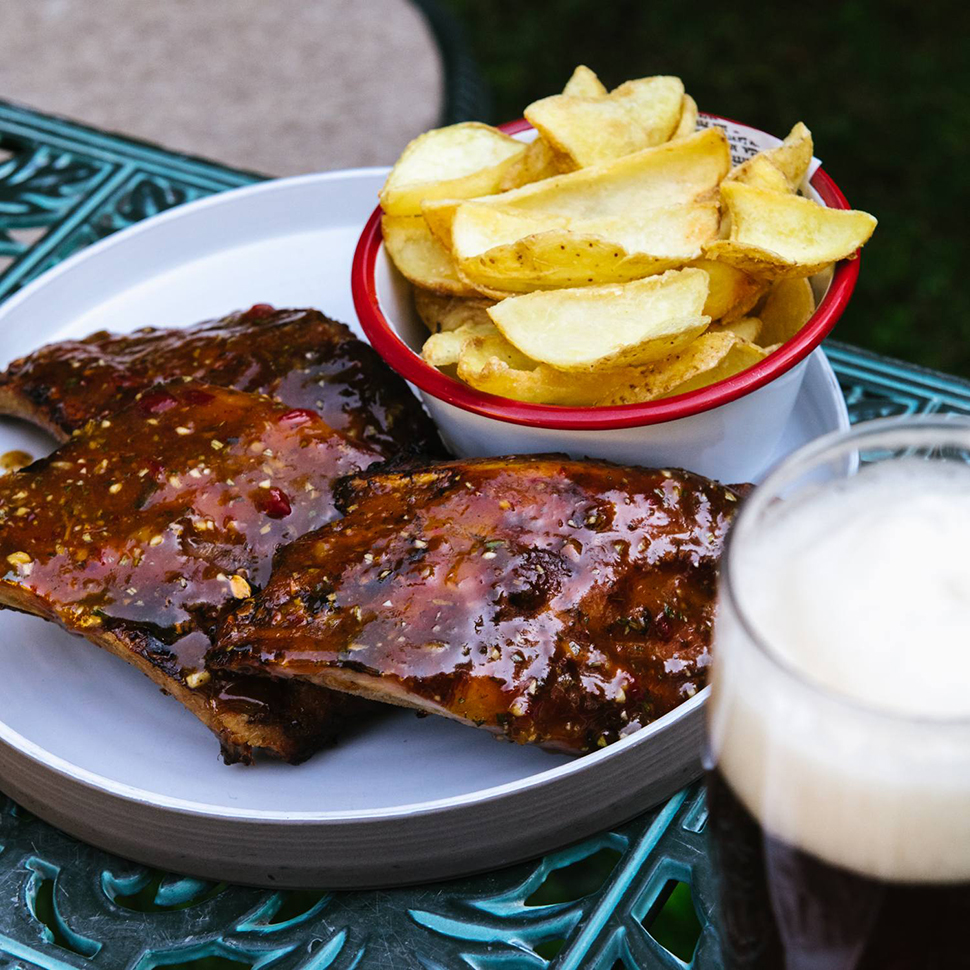
L'Murin, for years an institutional tavern ready to churn out pork ribs and bean soup daily, is now transformed into a beer garden. It opens at 5:30 p.m. and closes at 1 a.m., every day except Monday. It can be found across the street from the hotel; legend has it that it was once a mill, and we like to embrace that suggestive theory.
The Cellar
In Lewis Carroll's novel, Alice ends up stumbling into a surreal labyrinth with carved hedges and a thin mist. The logic makes no sense, apparently. However, the episode is nothing more than a metaphor about finding one's place in the world, a curious and profound inner journey, at times bizarre.
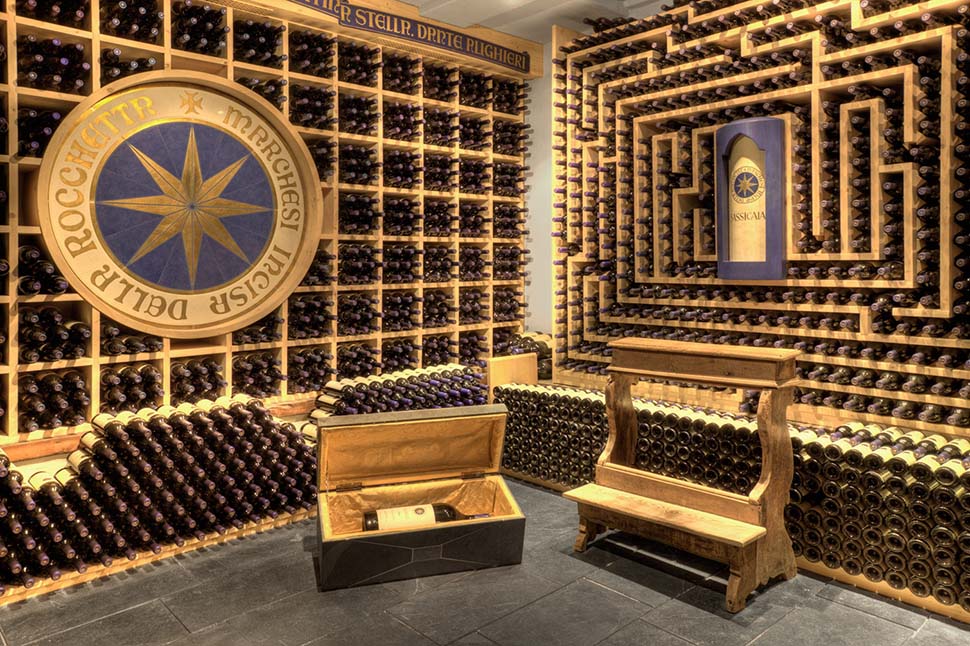
Behold, in the Mahatma Wine vault it is as if there were a voice guiding the adventurous: shadows unfold in the basement, 30,000 bottles, 3,000 labels, sound and light effects take the mind beyond the grandeur of one of Italy's most majestic wine cathedrals.
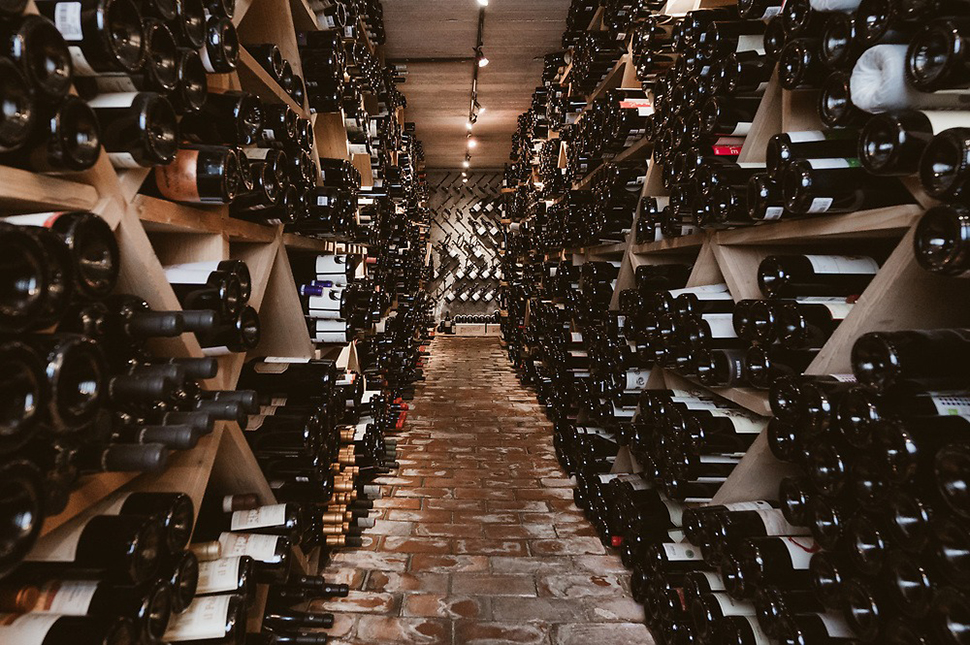
It is the symphony, intense and fluid, that orients in the darkness, memory instead illuminates, and then the glow. Twists and suspense, among alcoves and corridors, and hidden rarities, which only Silvio Galvan, head sommelier, knows inside out. To reveal more would be too much: it deserves to be experienced.
La Stüa de Michil - 1 Michelin star, and the kitchen of Simone Cantafio
Little Wunderkammer, literally “chamber of wonders”, although it would be better to call it the Zen temple of Simone Cantafio. Born in Milan and Calabrese in DNA, he is a chef of rare sensibility, exactly like his dishes; he takes his cue from the vegetable universe and cultural fusion to overcome the boundaries of the territory, while representing it in all its components.

“The ultimate work” starts with the choice of raw material: one must touch it, know it, understand it, only then can it be properly handled and translated into distinctive flavors. During the long interlude in Hokkaido, Simone realizes how much better it is to subtract than to add, and how empathy positively affects execution.
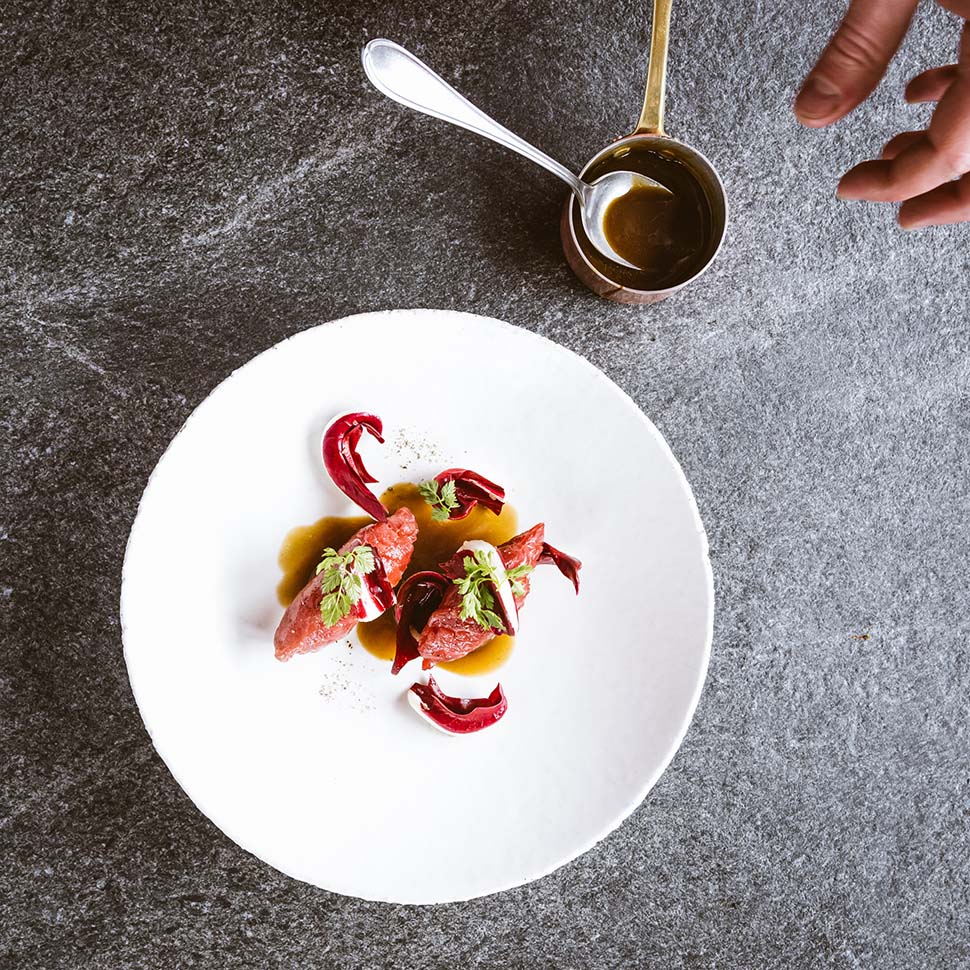
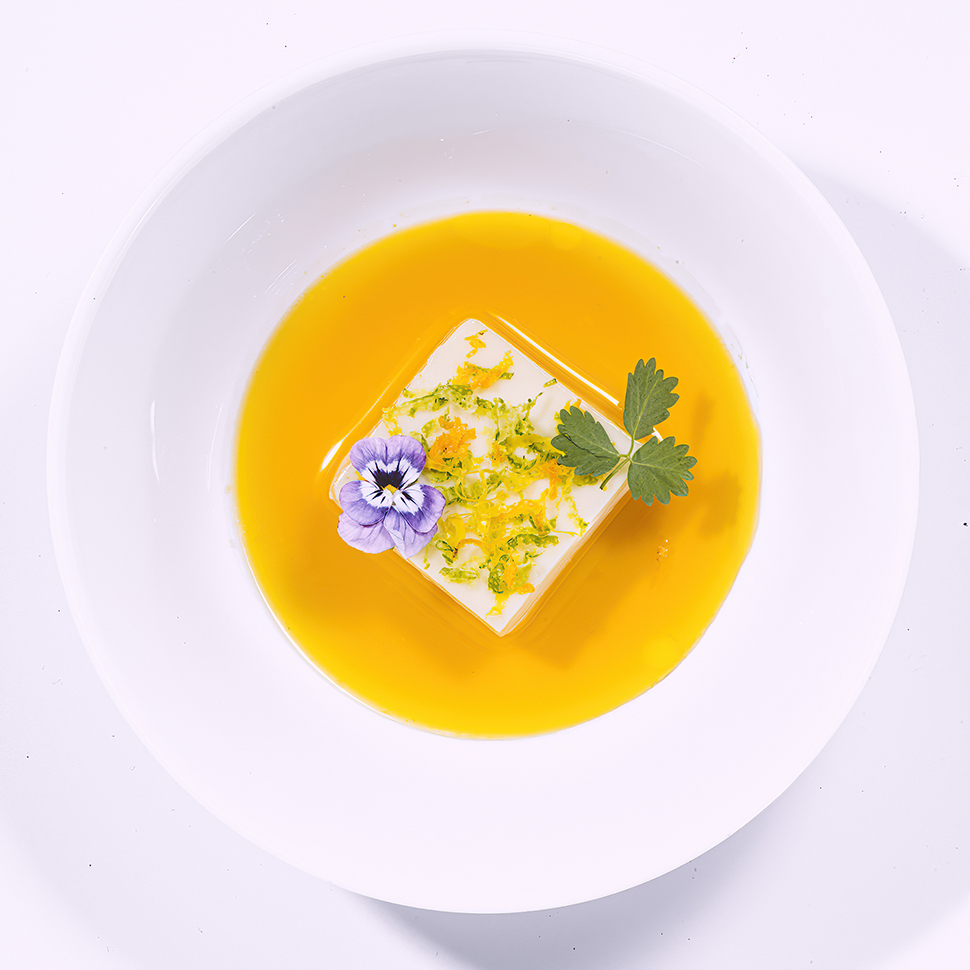
The eleven-person team interfaces with local suppliers, discreet and attentive to environmental balances. The real dance then begins at the stove and continues in the dining room, the stage for ingredients that are often outdated but exclusively seasonal, enlivened by techniques that draw heavily from the Asian universe.
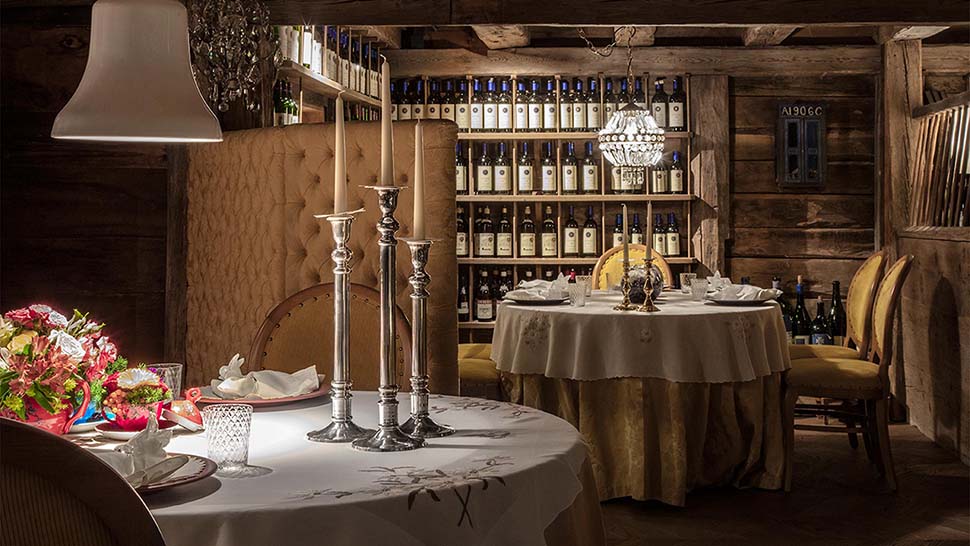
So at the Stüa a very important winter is in store: three highlight dates, on December 21, January 21 and February 21 respectively, symbolizing the remarkable journey undertaken. The first evening will feature white truffles (from Calabria) and Borgogno wines; the second in collaboration with Dom Perignon and Petrossian; and the last, divided into four acts and made with Claudio Liu of Iyo and the catch of the day, in keeping with the Japanese essence.
The Incö table
Introducing us to the project born a year and a half ago is the chef himself: "Incö in the Ladin language means ‘today’ and was born after three years since my arrival in Corvara, thanks to my relationships with producers and farmers from all over the Bel Paese: wonderful farms, but with small numbers. Rather than deprive myself of these excellences, I decided to create a restaurant within a restaurant, a table inside the Stüa de Michil for a minimum of two people to a maximum of five. So I went backwards in my career path and asked myself 'why did I fall in love with this profession?' Of course, I have traveled a lot, worked in both France and Japan, but I realized only after a moment's reflection that the spark was lit by my family, the moments of celebration, the Sundays, spent with them. On this idea, convivial and light, I abolished oriental china, which denatured Italian identity, to resume the custom of my women, who used to set the table in front of diners.".
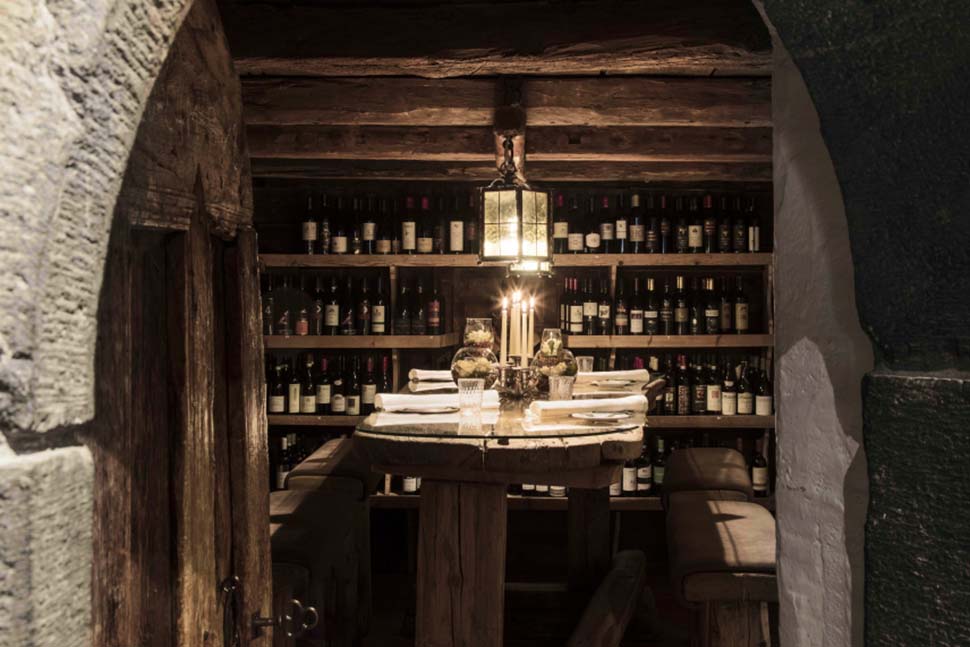
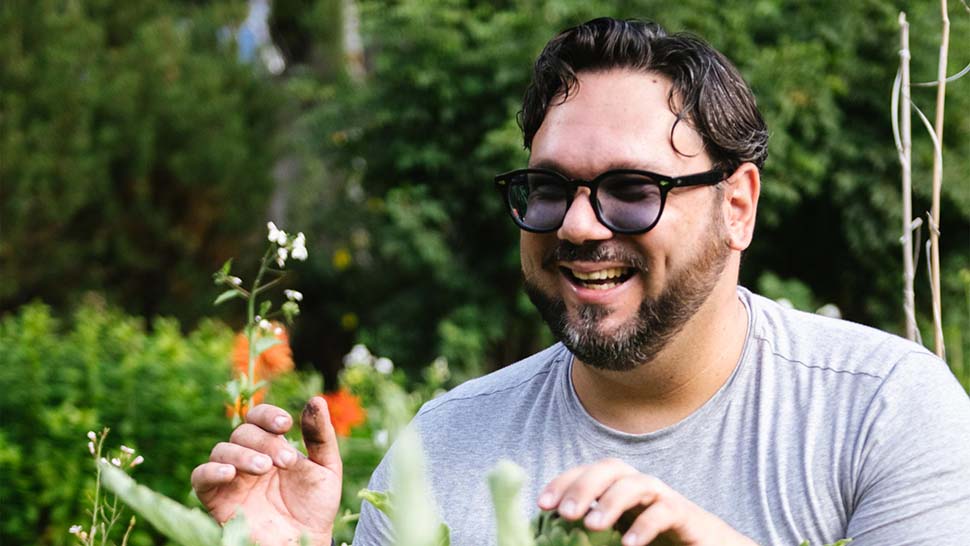
Every morning Simone meets with his boys to confront each other, nothing is planned well in advance since unforeseen events must also be considered. Very often it is necessary to submit to weather phenomena, some of which can be devastating, both for agriculture and livestock, just think of the flood that demolished hundreds of cultivated fields. “We need to learn to appreciate and value what we have now, and to develop a collective sensitivity.”
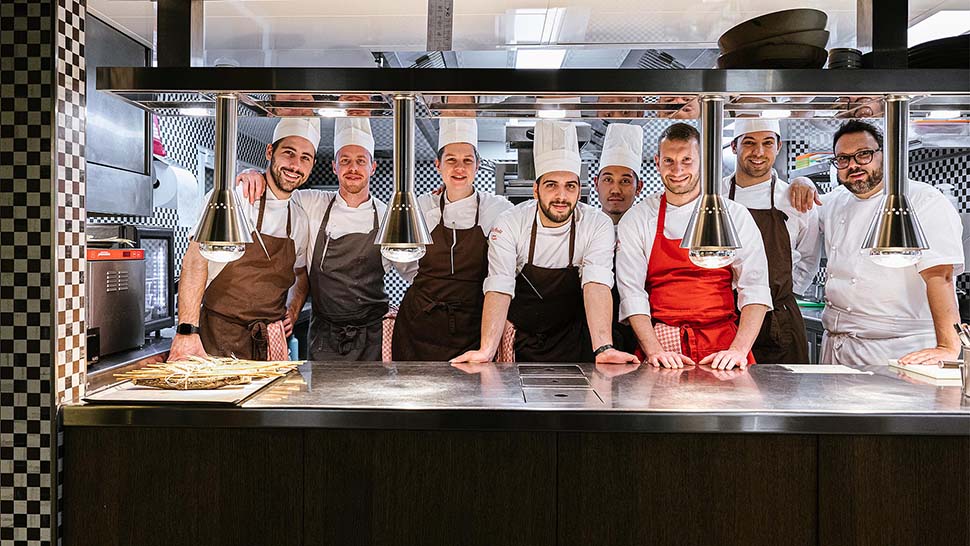
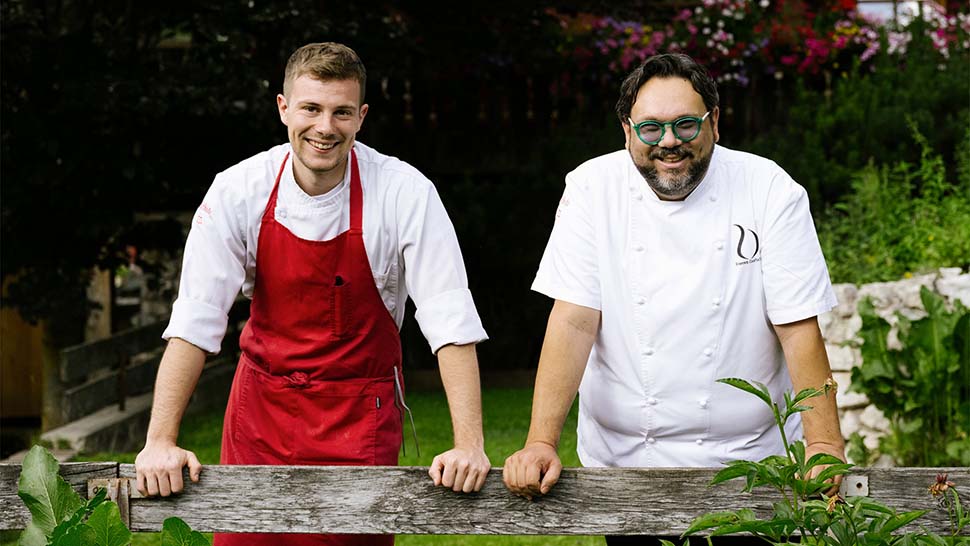
On a practical level, it is as if he is departing from the contemporary standardized superstructures, “You only need taste and to know the origin of what you put in your mouth.” “After the hors d'oeuvres, there is a main course, a sea bass, a leg of lamb, followed by side dish and sauce; then there are cheeses and in conclusion the inevitable desserts.”
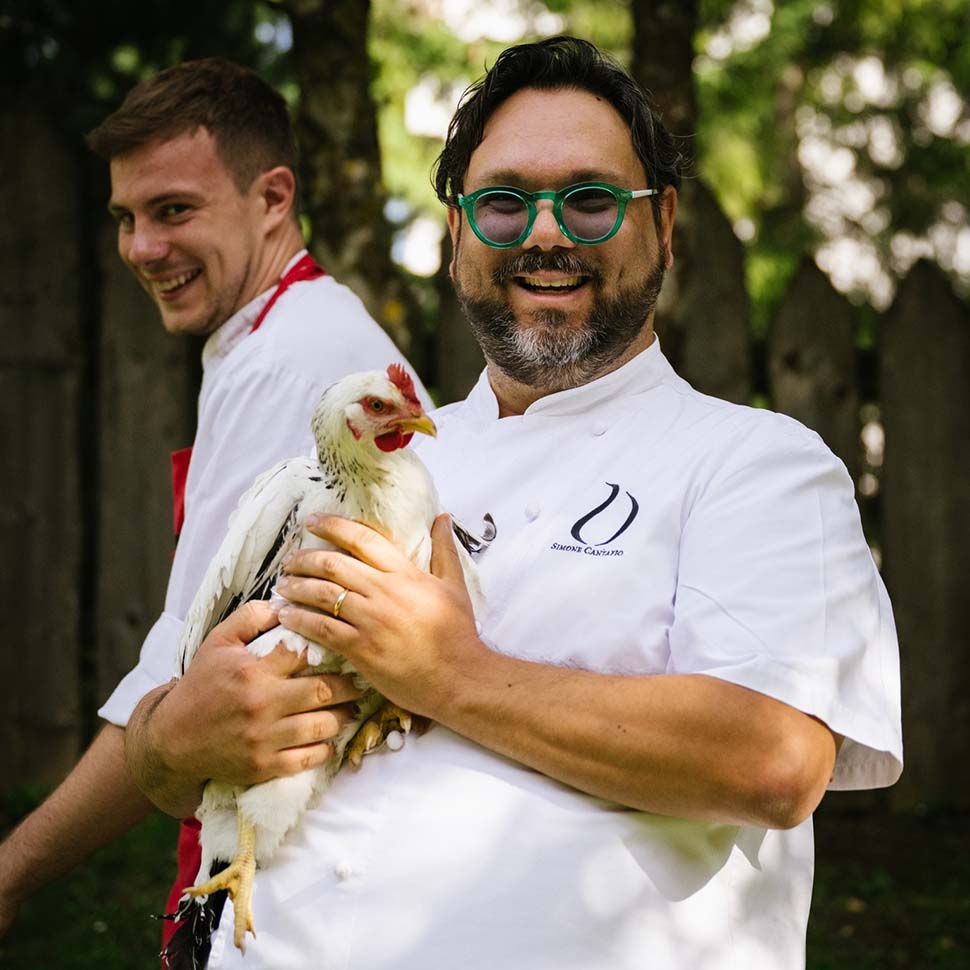
"The concept is constantly evolving, challenging, especially for those in charge of service and the various pairings. Resources change from week to week, you have to get up and running and stay in practice, the great Gualtiero Marchesi taught me that!".
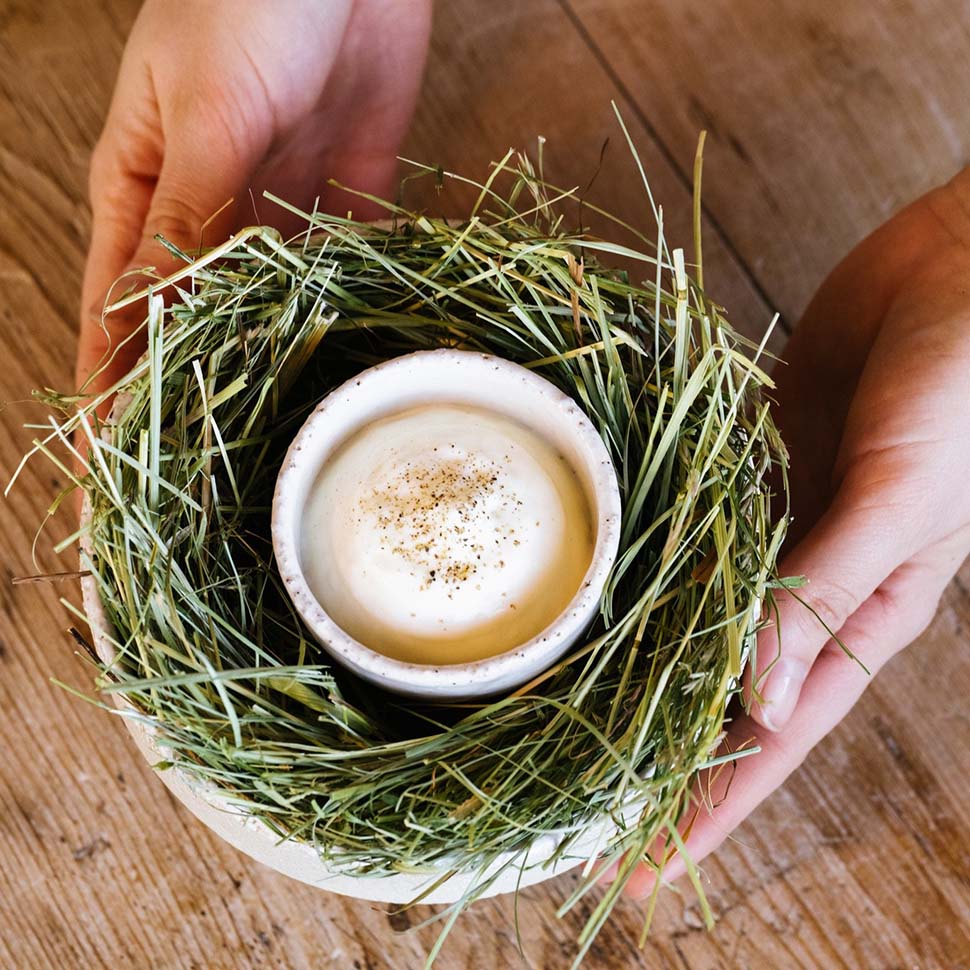
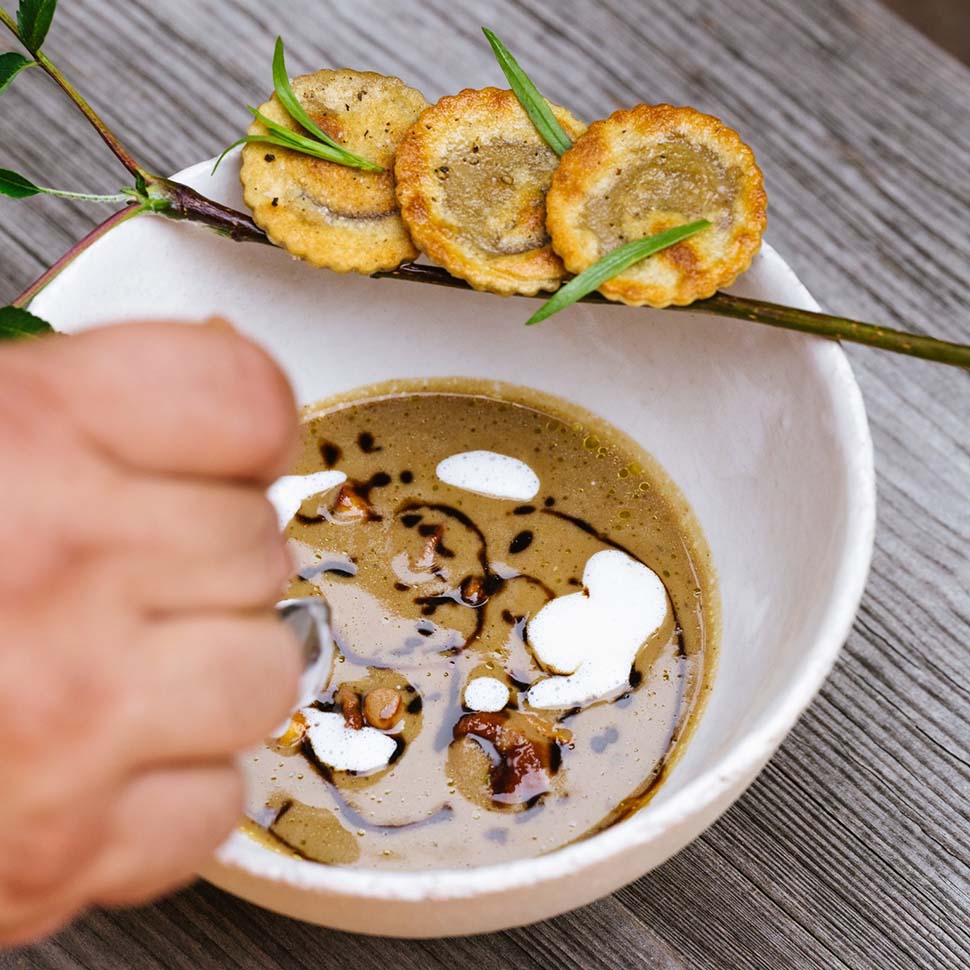
Pre-sales are already open for the book, which outlines the goals of this beautiful initiative, or you can purchase it at the shop adjacent to the Michelin-starred restaurant. “It does not contain recipes, rather the end result: the crucial aspect is to show how a chef succeeds in bringing to life 100% Made in Italy haute cuisine through the power of human interaction.”
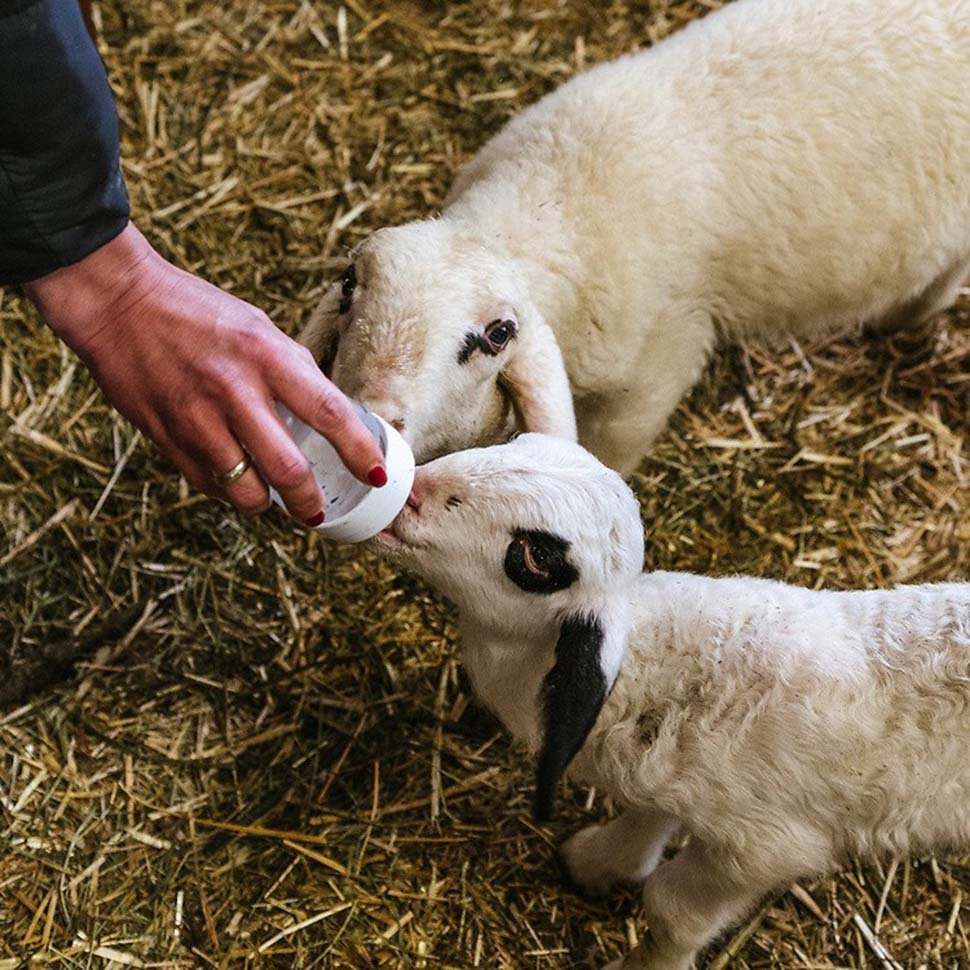
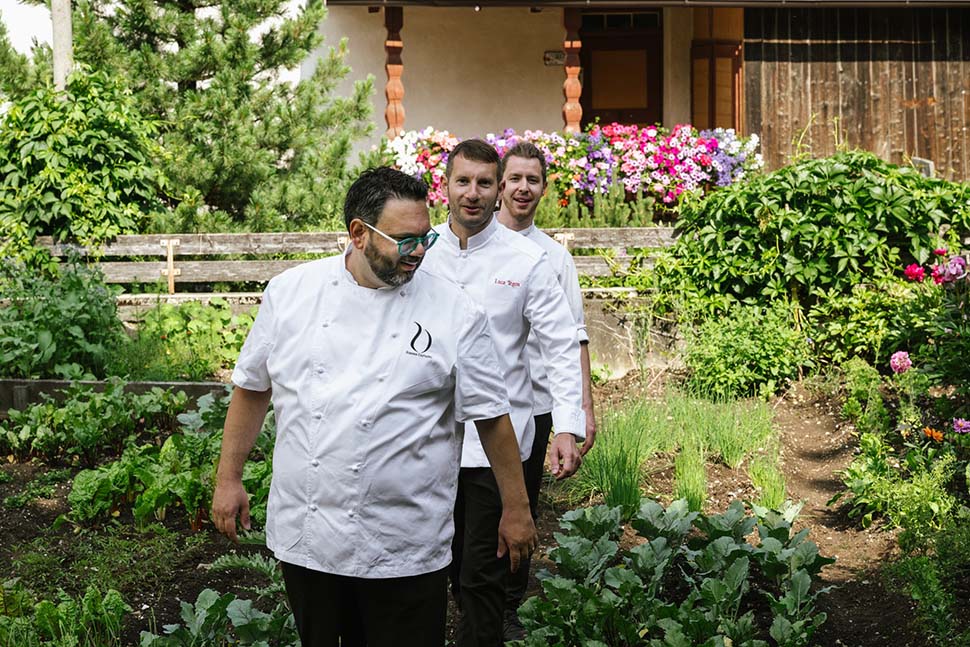
Incö's subtitle, “The Land is Alive, ”, has incredible expressive force, as it evokes the mantra as well as the header of Mario Incisa della Rocchetta's compendium published in 1970: "I was at the Sassicaia estates in Bolgheri when I heard about it, it sounded so interesting to me that I insisted on reading it. At the end of the visit the relatives of the Marquis gave me one of the few remaining original copies. I called them some time later to ask if I could incorporate that same quote into my volume, and they were thrilled".
Contact
Address:
Str. Col Alt 105, Corvara in Badia (BZ)
Phone:
+39 0471831000
E-mail:
info@hotel-laperla.it
